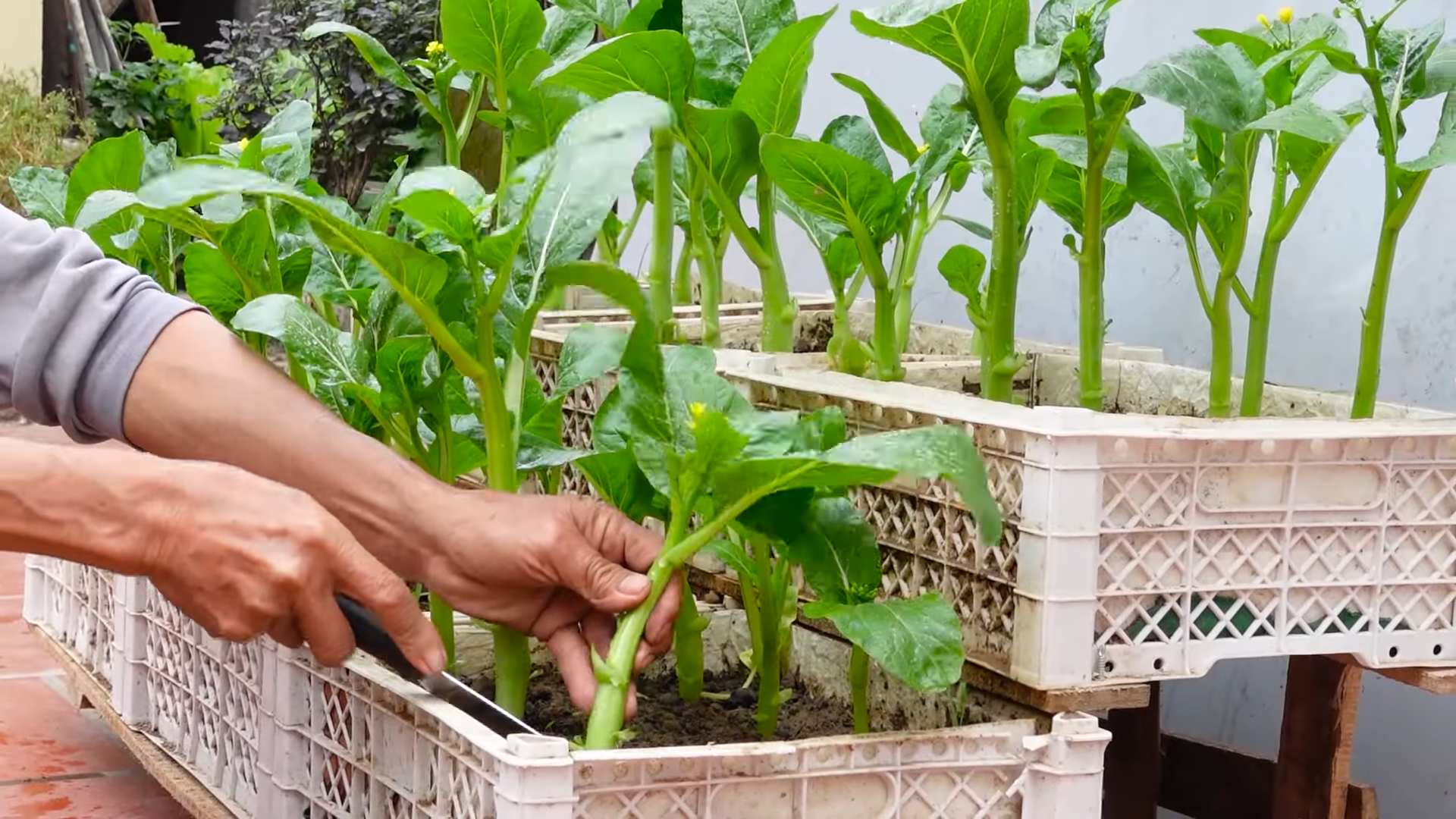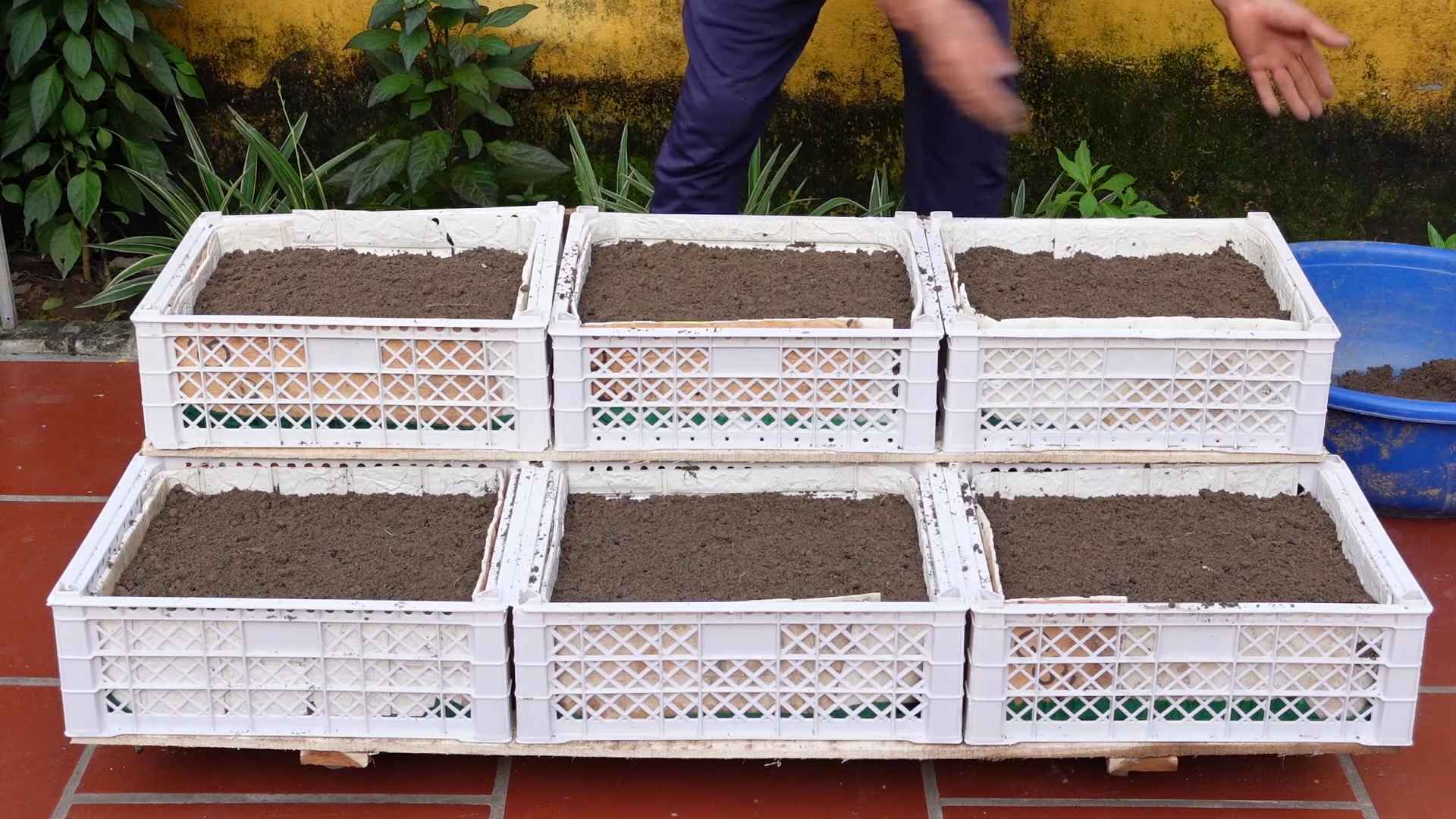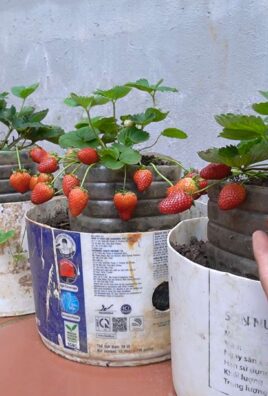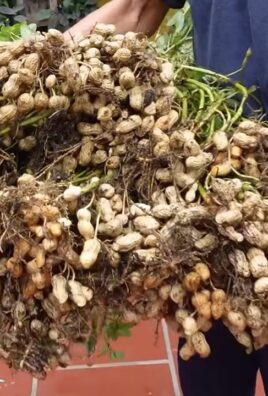Family vegetable garden routine – just the phrase conjures up images of sun-drenched tomatoes, crisp lettuce, and the joyful laughter of loved ones working side-by-side. But let’s be honest, turning that idyllic picture into reality can sometimes feel more like a Herculean task than a relaxing hobby! Are you tired of battling weeds, struggling with unpredictable weather, or simply feeling overwhelmed by the sheer amount of work involved in maintaining a thriving vegetable garden?
For centuries, families have cultivated their own food, passing down gardening wisdom from generation to generation. From the ancient kitchen gardens of Europe to the vibrant community plots of modern cities, the desire to connect with nature and nourish our loved ones with homegrown goodness remains a powerful force. But in today’s busy world, finding the time and energy for a full-blown gardening commitment can be a challenge.
That’s where clever DIY tricks and hacks come in! I’m here to share some simple yet effective strategies to streamline your family vegetable garden routine, making it more manageable, enjoyable, and ultimately, more productive. Whether you’re a seasoned gardener or just starting out, these tips will help you conquer common gardening hurdles and create a flourishing oasis right in your backyard. Get ready to ditch the overwhelm and embrace the joy of growing your own food with a family vegetable garden routine that actually works!

Building Your Dream Family Vegetable Garden: A Step-by-Step Guide
Hey there, fellow garden enthusiasts! I’m so excited you’re thinking about starting a family vegetable garden. Trust me, there’s nothing quite like the joy of harvesting fresh, homegrown veggies with your loved ones. It’s a fantastic way to teach kids about where their food comes from, spend quality time outdoors, and, of course, enjoy delicious, healthy meals. This guide will walk you through every step, from planning to planting to harvesting, making sure your family garden is a success!
Phase 1: Planning and Preparation – Laying the Groundwork for Success
Before you even think about digging, a little planning goes a long way. This phase is all about figuring out what you want to grow, where you’ll grow it, and how you’ll prepare the soil.
Choosing Your Location
* Sunlight is Key: Most vegetables need at least 6-8 hours of direct sunlight per day. Observe your yard throughout the day to see where the sun shines the longest.
* Water Access: Make sure your garden is close to a water source. Lugging heavy watering cans across the yard gets old fast!
* Soil Drainage: Avoid areas where water tends to pool after rain. Soggy soil can lead to root rot.
* Accessibility: Choose a location that’s easy to access for everyone in the family, including little ones. You want it to be a place where you’ll actually enjoy spending time.
* Consider Existing Structures: Think about the proximity to trees (roots can compete for nutrients) and buildings (shadows can affect sunlight).
Deciding What to Grow
* Family Favorites: Start with vegetables your family already loves to eat. This will ensure everyone is excited about the garden and motivated to help.
* Consider Your Climate: Research which vegetables thrive in your local climate and growing season. Your local extension office is a great resource for this.
* Space Requirements: Some vegetables, like pumpkins and watermelons, need a lot of space, while others, like lettuce and radishes, can be grown in smaller areas.
* Difficulty Level: Start with easy-to-grow vegetables like lettuce, radishes, beans, and zucchini. As you gain experience, you can try more challenging crops.
* Succession Planting: Plan to plant crops that mature at different times so you can have a continuous harvest throughout the growing season.
Preparing the Soil
* Soil Testing: A soil test will tell you the pH level and nutrient content of your soil. You can purchase a soil testing kit at most garden centers or send a sample to your local extension office.
* Clearing the Area: Remove any grass, weeds, rocks, and debris from the garden area.
* Improving Soil Quality: Amend the soil with compost, aged manure, or other organic matter to improve drainage, fertility, and water retention.
* Tilling or Digging: Till the soil to a depth of at least 12 inches to loosen it up and make it easier for roots to grow. If you prefer a no-till method, you can use a broadfork or simply add a thick layer of compost on top of the soil.
* Creating Raised Beds (Optional): Raised beds offer excellent drainage, improve soil warming in the spring, and make gardening easier on your back. You can build raised beds from wood, stone, or other materials.
Phase 2: Planting Your Vegetables – Getting Your Hands Dirty!
Now for the fun part – planting! This is where your garden starts to come to life.
Starting Seeds Indoors (Optional)
* Choose Your Seeds: Select high-quality seeds from a reputable source.
* Use Seed Starting Trays or Pots: Fill the trays or pots with seed starting mix.
* Sow the Seeds: Follow the instructions on the seed packet for planting depth and spacing.
* Water Gently: Keep the soil consistently moist but not soggy.
* Provide Light: Place the trays or pots under grow lights or in a sunny window.
* Harden Off Seedlings: Gradually acclimate the seedlings to outdoor conditions before transplanting them into the garden. This involves exposing them to increasing amounts of sunlight and wind over a period of 7-10 days.
Direct Sowing Seeds
* Prepare the Soil: Rake the soil smooth and remove any large clumps.
* Create Rows or Hills: Follow the instructions on the seed packet for spacing and planting depth.
* Sow the Seeds: Sprinkle the seeds evenly in the rows or hills.
* Cover the Seeds: Gently cover the seeds with soil.
* Water Gently: Water the soil thoroughly but gently to avoid washing away the seeds.
* Mark the Rows: Label each row with the name of the vegetable and the date it was planted.
Transplanting Seedlings
* Dig Holes: Dig holes that are slightly larger than the root ball of the seedlings.
* Remove Seedlings from Pots: Gently remove the seedlings from their pots, being careful not to damage the roots.
* Place Seedlings in Holes: Place the seedlings in the holes and backfill with soil.
* Water Thoroughly: Water the seedlings thoroughly to help them establish.
* Mulch Around Seedlings: Apply a layer of mulch around the seedlings to help retain moisture and suppress weeds.
Important Planting Tips
* Follow Planting Dates: Plant vegetables at the appropriate time of year for your climate. Your local extension office can provide a planting calendar.
* Consider Companion Planting: Plant vegetables that benefit each other when grown together. For example, basil repels pests that attack tomatoes.
* Rotate Crops: Avoid planting the same vegetables in the same location year after year to prevent soil depletion and disease buildup.
* Don’t Overcrowd: Give your vegetables enough space to grow and thrive. Overcrowding can lead to disease and reduced yields.
Phase 3: Maintaining Your Garden – Keeping Things Growing Strong
The work doesn’t stop after planting! Regular maintenance is essential for a healthy and productive garden.
Watering
* Water Deeply and Infrequently: Water deeply to encourage roots to grow deep into the soil. Water less frequently to avoid overwatering.
* Water in the Morning: Water in the morning to allow the foliage to dry before nightfall, which can help prevent fungal diseases.
* Use a Soaker Hose or Drip Irrigation: These methods deliver water directly to the roots, minimizing water waste and reducing the risk of foliar diseases.
* Check Soil Moisture: Stick your finger into the soil to check the moisture level. If the top inch of soil is dry, it’s time to water.
Weeding
* Weed Regularly: Remove weeds as soon as you see them to prevent them from competing with your vegetables for nutrients and water.
* Hand Weeding: Hand weeding is the most effective way to remove weeds, especially in small gardens.
* Mulching: Mulching helps suppress weeds by blocking sunlight.
* Hoeing: Use a hoe to cultivate the soil and remove weeds between rows.
Fertilizing
* Use Organic Fertilizers: Organic fertilizers, such as compost, aged manure, and bone meal, are a great way to provide your vegetables with the nutrients they need.
* Fertilize Regularly: Follow the instructions on the fertilizer label for application rates and frequency.
* Side-Dress Vegetables: Side-dress vegetables with fertilizer by applying it along the rows or around the plants.
* Foliar Feeding: Foliar feeding involves spraying a diluted fertilizer solution directly onto the leaves of the plants.
Pest and Disease Control
* Inspect Plants Regularly: Check your plants regularly for signs of pests and diseases.
* Identify Pests and Diseases: Accurately identify the pests and diseases affecting your plants before taking any action.
* Use Organic Pest Control Methods: Organic pest control methods, such as handpicking pests, using insecticidal soap, and introducing beneficial insects, are a safe and effective way to control pests.
* Use Organic Disease Control Methods: Organic disease control methods, such as improving air circulation, avoiding overhead watering, and using copper fungicide, are a safe and effective way to control diseases.
* Remove Diseased Plants: Remove and destroy any diseased plants to prevent the spread of disease.
Pruning and Training
* Prune Tomatoes: Prune tomatoes to remove suckers (small shoots that grow between the main stem and the branches) to improve air circulation and encourage fruit production.
* Train Climbing Vegetables: Train climbing vegetables, such as cucumbers and beans, to grow on trellises or stakes to save space and improve air circulation.
Phase 4: Harvesting and Enjoying Your Bounty – The Fruits (and Vegetables!) of

Conclusion
So, there you have it! Transforming your family vegetable garden routine with this simple yet incredibly effective DIY trick is more than just a gardening hack; it’s an investment in your family’s health, well-being, and connection to nature. We’ve walked you through the process, highlighting the ease and affordability of this method, and showcasing the potential for a more bountiful and enjoyable gardening experience.
Why is this a must-try? Because it addresses some of the most common challenges faced by family gardeners. It streamlines the process, making it less daunting for beginners and more efficient for experienced green thumbs. It fosters a sense of accomplishment and shared responsibility, turning gardening into a fun and educational activity for the whole family. And, most importantly, it helps you grow healthier, more delicious vegetables that you can feel good about feeding your loved ones.
But don’t just take our word for it. The beauty of this DIY trick lies in its adaptability. Feel free to experiment with variations to suit your specific needs and preferences. For example, if you’re short on space, consider adapting the method for container gardening. You can use smaller containers and adjust the watering schedule accordingly. Or, if you have a particular type of vegetable you’re passionate about growing, tailor the trick to its specific requirements. Perhaps you want to focus on creating the perfect soil mix for tomatoes or developing a pest control strategy specifically for your leafy greens. The possibilities are endless!
Consider adding companion plants to your vegetable garden routine. Marigolds, for instance, are known to deter pests, while basil can improve the flavor of tomatoes. Integrating these natural allies into your garden can further enhance its health and productivity.
Another variation to consider is incorporating a composting system into your family vegetable garden routine. Composting not only reduces waste but also provides a rich source of nutrients for your plants. It’s a fantastic way to teach children about sustainability and the importance of recycling.
We understand that every garden and every family is unique. That’s why we encourage you to embrace the spirit of experimentation and find what works best for you. Don’t be afraid to make mistakes – they’re all part of the learning process. The most important thing is to get out there, get your hands dirty, and enjoy the journey of growing your own food.
We are confident that this DIY trick will revolutionize your family vegetable garden routine. It’s a game-changer that will save you time, money, and effort while yielding impressive results. So, what are you waiting for? Gather your supplies, round up your family, and get started today!
We’re eager to hear about your experiences. Share your photos, tips, and stories with us in the comments section below. Let’s create a community of passionate family gardeners who are committed to growing healthy food and fostering a love of nature in their children. Together, we can make a difference, one vegetable garden at a time.
Frequently Asked Questions (FAQ)
What exactly is the DIY trick you’re referring to?
The DIY trick we’ve been discussing involves optimizing your family vegetable garden routine through a combination of strategic planning, efficient resource management, and simple, cost-effective techniques. This includes things like creating a planting schedule, using raised beds or containers, implementing a watering system, and employing natural pest control methods. The specific steps will vary depending on your garden’s size, location, and the types of vegetables you’re growing.
Is this DIY trick suitable for beginner gardeners?
Absolutely! One of the best things about this approach is that it’s designed to be accessible to gardeners of all skill levels. We’ve broken down the process into manageable steps, and we’ve provided plenty of tips and resources to help you along the way. Even if you’ve never grown a vegetable before, you can successfully implement this DIY trick and enjoy a bountiful harvest. Start small, focus on a few easy-to-grow vegetables, and don’t be afraid to ask for help.
What if I don’t have a lot of space for a garden?
No problem! This DIY trick can be easily adapted for small spaces. Container gardening is a great option for balconies, patios, or even windowsills. Choose compact varieties of vegetables, such as bush beans, cherry tomatoes, and leafy greens. Vertical gardening is another space-saving technique that can be used to grow herbs, strawberries, and other small plants.
How much time will this DIY trick save me?
The amount of time you save will depend on your current gardening routine. However, by implementing the strategies we’ve outlined, you can expect to spend less time on tasks such as weeding, watering, and pest control. The key is to be proactive and organized. A well-planned garden requires less maintenance than a haphazard one.
What are some common mistakes to avoid when using this DIY trick?
One common mistake is overwatering. Too much water can lead to root rot and other problems. Another mistake is neglecting to fertilize your plants. Vegetables need nutrients to grow properly. Be sure to use a balanced fertilizer or compost to provide your plants with the nourishment they need. Finally, don’t forget to protect your plants from pests and diseases. Regularly inspect your plants for signs of trouble and take action promptly.
What are the best vegetables to grow for beginners?
Some of the easiest vegetables to grow for beginners include lettuce, spinach, radishes, carrots, beans, and zucchini. These vegetables are relatively low-maintenance and can tolerate a wide range of conditions. They also tend to produce a harvest quickly, which can be very rewarding for new gardeners.
How can I involve my children in the gardening process?
There are many ways to involve children in the gardening process. Let them help with tasks such as planting seeds, watering plants, and harvesting vegetables. Teach them about the different parts of a plant and how they grow. Make it fun by creating a scavenger hunt or a gardening-themed craft project. Gardening is a great way to teach children about science, nature, and healthy eating habits.
What if I encounter pests or diseases in my garden?
Pests and diseases are a common challenge in vegetable gardening. The best way to deal with them is to prevent them from occurring in the first place. Choose disease-resistant varieties of vegetables, practice good sanitation, and monitor your plants regularly. If you do encounter pests or diseases, there are many natural and organic control methods you can use.
How can I improve the soil in my garden?
Healthy soil is essential for growing healthy vegetables. If your soil is poor, you can improve it by adding organic matter, such as compost, manure, or leaf mold. These materials will help to improve the soil’s structure, drainage, and nutrient content. You can also use cover crops to improve the soil.
Where can I find more information about vegetable gardening?
There are many resources available to help you learn more about vegetable gardening. Your local library, garden center, and cooperative extension office are all great places to start. You can also find a wealth of information online. Just be sure to consult reputable sources.




Leave a Comment